速度收藏20个常用的Python技巧,太赞啦
Posted 学Python的阿杜
tags:
篇首语:本文由小常识网(cha138.com)小编为大家整理,主要介绍了速度收藏20个常用的Python技巧,太赞啦相关的知识,希望对你有一定的参考价值。
Python的可读性和简单性是其广受欢迎的两大原因,本文介绍20个常用的Python技巧来提高代码的可读性,并能帮助你节省大量时间,下面的技巧将在你的日常编码练习中非常实用。
1.字符串反转
使用Python切片反转字符串:
\\# Reversing a string using slicing
my\\_string \\= "ABCDE"
reversed\\_string \\= my\\_string\\[::\\-1\\]
print(reversed\\_string)
\\# Output
\\# EDCBA
2.每个单词的第一个字母大写
使用title函数方法:
my\\_string \\= "my name is chaitanya baweja"
\\# using the title() function of string class
new\\_string \\= my\\_string.title()
print(new\\_string)
\\# Output
\\# My Name Is Chaitanya Baweja
3. 字符串查找唯一元素
使用集合的概念查找字符串的唯一元素:
my\\_string \\= "aavvccccddddeee"
\\# converting the string to a set
temp\\_set \\= set(my\\_string)
\\# stitching set into a string using join
new\\_string \\= ''.join(temp\\_set)
print(new\\_string)
\\# output
\\# cdvae
4.重复打印字符串和列表n次
你可以使用乘法符号(*)打印字符串或列表多次:
n \\= 3 \\# number of repetitions
my\\_string \\= "abcd"
my\\_list \\= \\[1,2,3\\]
print(my\\_string\\*n)
\\# abcdabcdabcd
print(my\\_list\\*n)
\\# \\[1,2,3,1,2,3,1,2,3\\]
5.列表生成
\\# Multiplying each element in a list by 2
original\\_list \\= \\[1,2,3,4\\]
new\\_list \\= \\[2\\*x for x in original\\_list\\]
print(new\\_list)
\\# \\[2,4,6,8\\]
6.变量交换
a \\= 1
b \\= 2
a, b \\= b, a
print(a) \\# 2
print(b) \\# 1
7.字符串拆分为子字符串列表
使用.split()函数:
string\\_1 \\= "My name is Chaitanya Baweja"
string\\_2 \\= "sample/ string 2"
\\# default separator ' '
print(string\\_1.split())
\\# \\['My', 'name', 'is', 'Chaitanya', 'Baweja'\\]
\\# defining separator as '/'
print(string\\_2.split('/'))
\\# \\['sample', ' string 2'\\]
8.多个字符串组合为一个字符串
list\\_of\\_strings \\= \\['My', 'name', 'is', 'Chaitanya', 'Baweja'\\]
\\# Using join with the comma separator
print(','.join(list\\_of\\_strings))
\\# Output
\\# My,name,is,Chaitanya,Baweja
9.检测字符串是否为回文
my\\_string \\= "abcba"
if my\\_string \\== my\\_string\\[::\\-1\\]:
print("palindrome")
else:
print("not palindrome")
\\# Output
\\# palindrome
10. 统计列表中元素的次数
\\# finding frequency of each element in a list
from collections import Counter
my\\_list \\= \\['a','a','b','b','b','c','d','d','d','d','d'\\]
count \\= Counter(my\\_list) \\# defining a counter object
print(count) \\# Of all elements
\\# Counter('d': 5, 'b': 3, 'a': 2, 'c': 1)
print(count\\['b'\\]) \\# of individual element
\\# 3
print(count.most\\_common(1)) \\# most frequent element
\\# \\[('d', 5)\\]
11.判断两个字符串是否为Anagrams
Anagrams的含义为两个单词中,每个英文单词(不含大小写)出现的次数相同,使用Counter类判断两个字符串是否为Anagrams。
from collections import Counter
str\\_1, str\\_2, str\\_3 \\= "acbde", "abced", "abcda"
cnt\\_1, cnt\\_2, cnt\\_3 \\= Counter(str\\_1), Counter(str\\_2), Counter(str\\_3)
if cnt\\_1 \\== cnt\\_2:
print('1 and 2 anagram')
if cnt\\_1 \\== cnt\\_3:
print('1 and 3 anagram')
\\# output
\\# 1 and 2 anagram
12. 使用try-except-else-block模块
except获取异常处理:
a, b \\= 1,0
try:
print(a/b)
\\# exception raised when b is 0
except ZeroDivisionError:
print("division by zero")
else:
print("no exceptions raised")
finally:
print("Run this always")
\\# output
\\# division by zero
\\# Run this always
13. 使用枚举函数得到key/value对
my\\_list \\= \\['a', 'b', 'c', 'd', 'e'\\]
for index, value in enumerate(my\\_list):
print('0: 1'.format(index, value))
\\# 0: a
\\# 1: b
\\# 2: c
\\# 3: d
\\# 4: e
14.检查对象的内存使用情况
import sys
num \\= 21
print(sys.getsizeof(num))
\\# In Python 2, 24
\\# In Python 3, 28
15.合并字典
dict\\_1 \\= 'apple': 9, 'banana': 6
dict\\_2 \\= 'banana': 4, 'orange': 8
combined\\_dict \\= \\*\\*dict\\_1, \\*\\*dict\\_2
print(combined\\_dict)
\\# Output
\\# 'apple': 9, 'banana': 4, 'orange': 8
16.计算执行一段代码所花费的时间
使用time类计算运行一段代码所花费的时间:
import time
start\\_time \\= time.time()
\\# Code to check follows
for i in range(10\\*\\*5):
a, b \\= 1,2
c \\= a+ b
\\# Code to check ends
end\\_time \\= time.time()
time\\_taken\\_in\\_micro \\= (end\\_time\\- start\\_time)\\*(10\\*\\*6)
print(time\\_taken\\_in\\_micro)
\\# output
\\# 18770.217895507812
17. 列表展开
from iteration\\_utilities import deepflatten
\\# if you only have one depth nested\\_list, use this
def flatten(l):
return \\[item for sublist in l for item in sublist\\]
l \\= \\[\\[1,2,3\\],\\[3\\]\\]
print(flatten(l))
\\# \\[1, 2, 3, 3\\]
\\# if you don't know how deep the list is nested
l \\= \\[\\[1,2,3\\],\\[4,\\[5\\],\\[6,7\\]\\],\\[8,\\[9,\\[10\\]\\]\\]\\]
print(list(deepflatten(l, depth\\=3)))
\\# \\[1, 2, 3, 4, 5, 6, 7, 8, 9, 10\\]
18. 列表采样
import random
my\\_list \\= \\['a', 'b', 'c', 'd', 'e'\\]
num\\_samples \\= 2
samples \\= random.sample(my\\_list,num\\_samples)
print(samples)
\\# \\[ 'a', 'e'\\] this will have any 2 random values
19.数字化
将整数转化成数字列表:
num \\= 123456
\\# using map
list\\_of\\_digits \\= list(map(int, str(num)))
print(list\\_of\\_digits)
\\# \\[1, 2, 3, 4, 5, 6\\]
\\# using list comprehension
list\\_of\\_digits \\= \\[int(x) for x in str(num)\\]
print(list\\_of\\_digits)
\\# \\[1, 2, 3, 4, 5, 6\\]
20.检查列表元素的唯一性
检查列表中每个元素是否为唯一的:
def unique(l):
if len(l)\\==len(set(l)):
print("All elements are unique")
else:
print("List has duplicates")
unique(\\[1,2,3,4\\])
\\# All elements are unique
unique(\\[1,1,2,3\\])
\\# List has duplicates
最后这里免费分享给大家一份Python全套学习资料,包含视频、源码。课件,希望能帮到那些不满现状,想提升自己却又没有方向的朋友,也可以加我微信一起来学习交流。
① Python所有方向的学习路线图,清楚各个方向要学什么东西
② 100多节Python课程视频,涵盖必备基础、爬虫和数据分析
③ 100多个Python实战案例,学习不再是只会理论
④ 华为出品独家Python漫画教程,手机也能学习
⑤ 历年互联网企业Python面试真题,复习时非常方便
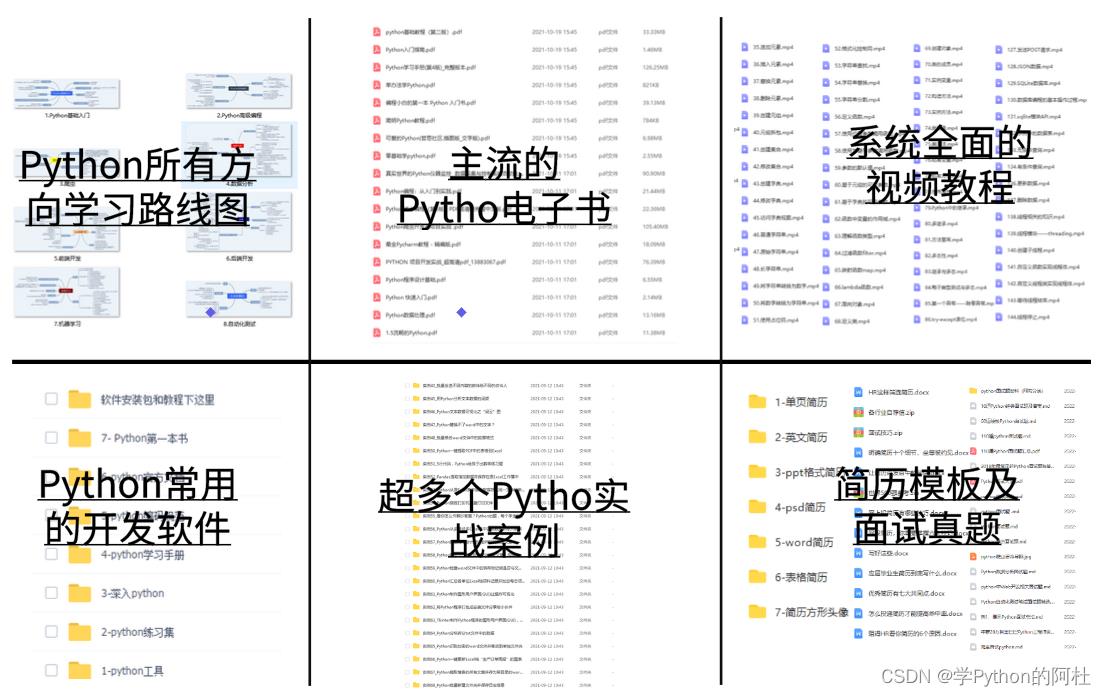
上述这份完整版的Python全套学习资料已经上传CSDN官方,朋友们如果需要可以直接划到文末免费领取【保证100%免费】
一、Python所有方向的学习路线
Python所有方向路线就是把Python常用的技术点做整理,形成各个领域的知识点汇总,它的用处就在于,你可以按照上面的知识点去找对应的学习资源,保证自己学得较为全面。

二、学习软件
工欲善其事必先利其器。学习Python常用的开发软件都在这里了,给大家节省了很多时间。
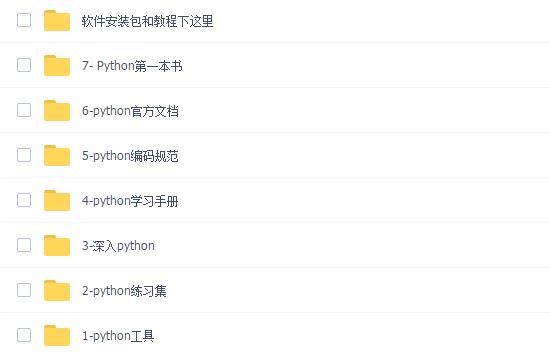
三、全套PDF电子书
书籍的好处就在于权威和体系健全,刚开始学习的时候你可以只看视频或者听某个人讲课,但等你学完之后,你觉得你掌握了,这时候建议还是得去看一下书籍,看权威技术书籍也是每个程序员必经之路。

四、入门学习视频
我们在看视频学习的时候,不能光动眼动脑不动手,比较科学的学习方法是在理解之后运用它们,这时候练手项目就很适合了。
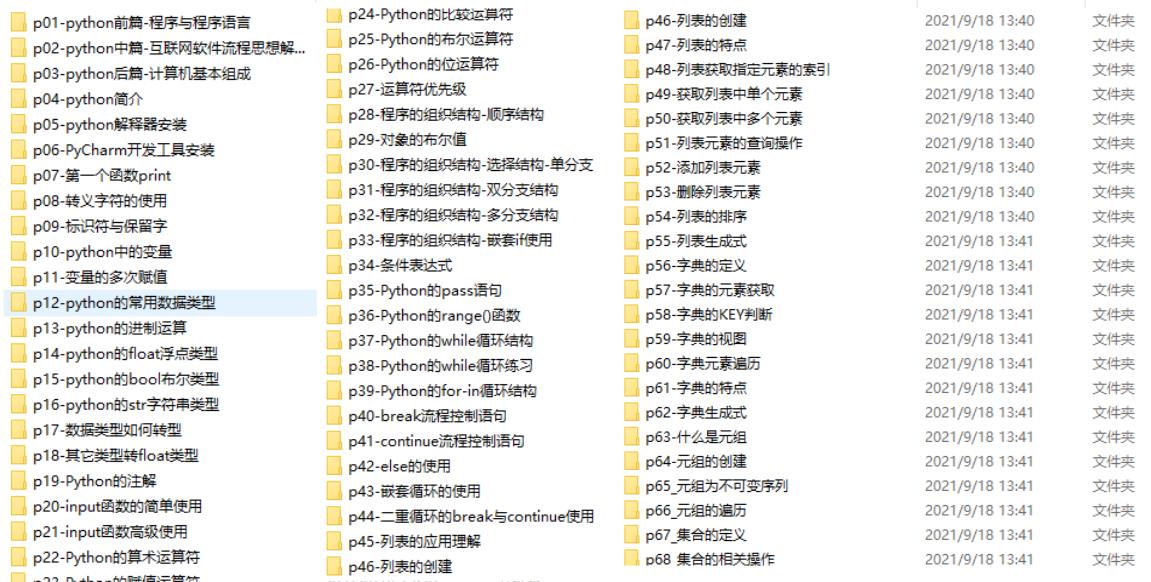
四、实战案例
光学理论是没用的,要学会跟着一起敲,要动手实操,才能将自己的所学运用到实际当中去,这时候可以搞点实战案例来学习。

五、清华编程大佬出品《漫画看学Python》
用通俗易懂的漫画,来教你学习Python,让你更容易记住,并且不会枯燥乏味。
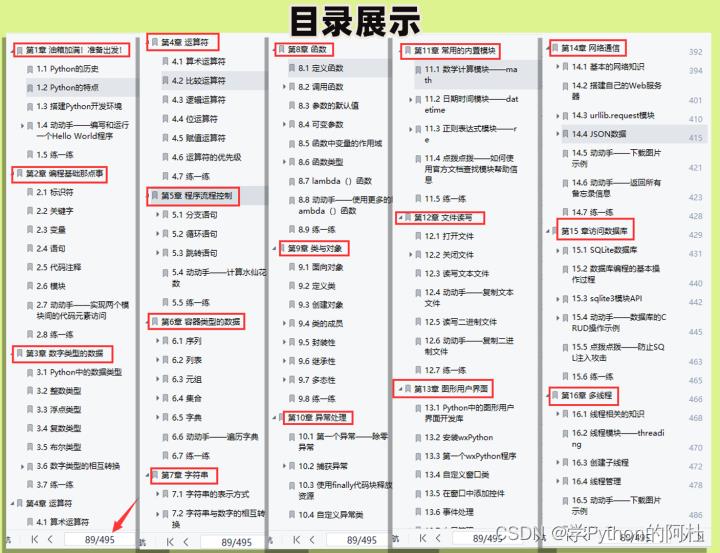
配套学习视频:

六、面试资料
我们学习Python必然是为了找到高薪的工作,下面这些面试题是来自阿里、腾讯、字节等一线互联网大厂最新的面试资料,并且有阿里大佬给出了权威的解答,刷完这一套面试资料相信大家都能找到满意的工作。
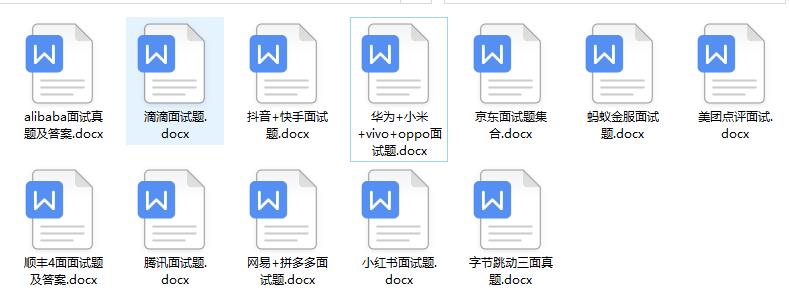

这份完整版的Python全套学习资料已经上传CSDN官方,朋友们如果需要可以点击下方CSDN官方认证微信名片免费领取↓↓↓【保证100%免费】
以上是关于速度收藏20个常用的Python技巧,太赞啦的主要内容,如果未能解决你的问题,请参考以下文章